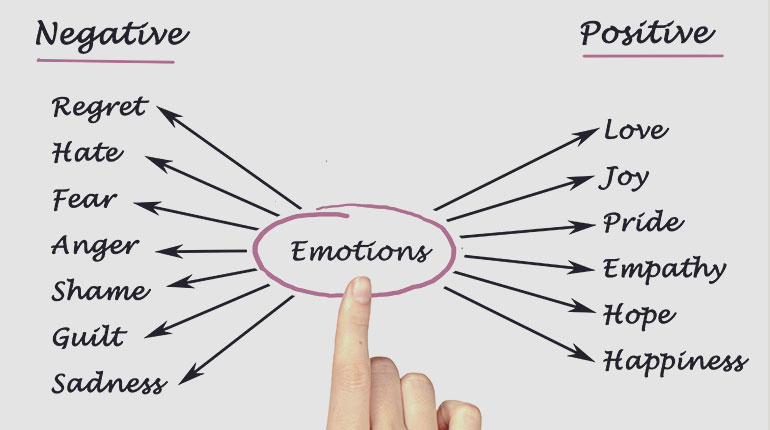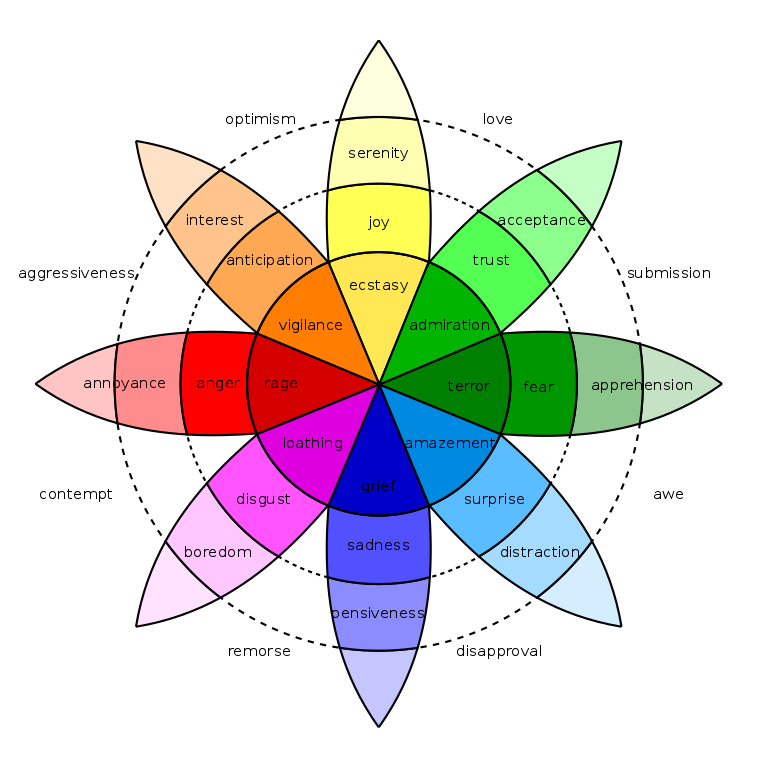As with all content on this site, this content is meant for personal development and wellness and not intended to be a substitute for getting professional guidance and help.
If you’ve been following me, you know I’m a big fan of framing things within the Internal Family Systems (IFS) model. IFS is about welcoming, understanding and harmonizing the different parts of ourselves. And there’s a “part that’s not a part,” called Self / Self Energy. One of the goals of IFS is to be Self led (parts led by Self). Today, I am trying my best to frame a DBT method within IFS. The method is called opposite action. But why consider it? Well, recent research has identified the aMCC (anterior midcingulate cortex) as a key area of interest when it comes to tenacity. Turns out, this little part of our brain is a powerhouse when it comes to grit, resilience, and perhaps even superaging (maintaining high cognitive ability as we age). What’s really cool is that we can generally strengthen this part of our brain by doing things we initially resist (perseverance). Hence this led me to pondering opposite actions, especially as an in-the-moment strategy: how do I keep in mind the different the roles and intentions of different parts (IFS focus), while also make it easier to tolerate distress (DBT focus)?
So, as a non-psychotherapy adaption of “opposite action,” I thought, why not get the entire internal family on board with this idea? (E.g. I work with derailers, not disorders.) If we’re going to strengthen our aMCC and reap the benefits of increased tenacity and resilience, every part (the entire inner fam) needs to be in on it. It’s about more than just forcing ourselves to do something; it’s about understanding and agreeing collectively that this is a path worth pursuing for our overall well-being. (IFS warns us about the backlash we see when parts are forced into doing something they don’t like. We want to get advance permission from the whole system.)
Opposite action can be used with emotions that either are “unjustified” in and of themselves, or “unjustified” in their intensity levels. (I just can’t help from putting those quotes around “unjustified” because I would argue that these emotions are justified in the sense that there’s a behind-the-scenes trauma, stress-based, or threat-based neuronal encoding from yesteryear that has just been triggered.) Never-the-less, these emotions are generally coupled with action urges that are harmful or on the harmful side, so stepping in with opposite actions lets you replace these unhelpful actions with more positive and helpful ones. (Opposite action is part of DBT, which came from CBT, which came for REBT.)
For anger, the action urge is generally wild, LOUD, and fist-clenchy, so the opposite action is kind acts and jazz hands.
Quick List: Examples of Opposite Action
- Action Urge: Yelling in Anger – Opposite Action: Speak calmly or express gratitude.
- Action Urge: Avoiding Exercise due to Lethargy – Opposite Action: Engage in light physical activity.
- Action Urge: Procrastinating on a Task – Opposite Action: Start the task immediately.
- Action Urge: Withdrawing from Social Interaction (due to Anxiety) – Opposite Action: Initiate a conversation or attend a social event.
- Action Urge: Overeating When Stressed – Opposite Action: Choose a healthy snack or engage in a non-food-related activity.
- Action Urge: Avoiding a Fearful Situation (that’s not actually life threatening)- Opposite Action: Face the fear in a controlled manner.
- Action Urge: Impulse Spending – Opposite Action: Delay the purchase and review your budget.
- Action Urge: Isolating When Upset – Opposite Action: Share your feelings with a friend or family member.
- Action Urge: Giving in to Cravings for Unhealthy Foods – Opposite Action: Eat a nutritious meal or snack.
- Action Urge: Staying in Bed – Opposite Action: Get up and do a light activity.
- Action Urge: Reacting Aggressively in Conflict – Opposite Action: Practice active listening and seek peaceful resolution.
- Action Urge: Smoking When Stressed – Opposite Action: Use a stress-relief technique like deep breathing.
- Action Urge: Avoiding Difficult Conversations – Opposite Action: Initiate the conversation in a calm setting.
- Action Urge: Hitting Snooze and Oversleeping – Opposite Action: Get up with the first alarm.
- Action Urge: Binge-Watching TV When Bored – Opposite Action: Engage in a creative or productive activity.
- Action Urge: Engaging in Self-criticism Due to Guilt – Opposite Action: Take constructive steps to make amends if possible, and then practice self-forgiveness and reflection for personal growth.
- Action Urge: Dwelling on Past Mistakes Due to Regret – Opposite Action: Focus on present actions and future opportunities, and engage in activities that foster personal growth and forward movement.
- Action Urge: Succumbing to Apathy – Opposite Action: Engage in a small, manageable task or activity that holds meaning for you.
A Closer Look… What is Dialectical Behavior Therapy (DBT)?
Dialectical Behavior Therapy (DBT) is a modified version of Cognitive Behavioral Therapy (CBT), combining standard cognitive behavioral techniques for emotion regulation and reality-testing with concepts of mindfulness, distress tolerance, and acceptance. The therapy offers skills to deal with feelings, thoughts, behaviors, and events. DBT is generally used for mood disorders, suicidal ideation, and substance abuse. In exploring this topic on BetterAndBetter, we need to state again that if you have a mood disorder, suicidal ideation, substance abuse, of any other condition (or suspect you have any of these), TALK TO YOUR DOCTOR about treatment! This article is intends to adapt this tool for non-psychotherapeutic use, like, when your co-worker boils your blood, or you feel overly guilty because you slept late and your dog only got to pee on a half dozen trees rather than a whole dozen trees.
The Four Modules of DBT
DBT is split into four different modules:
- Mindfulness
- Distress tolerance
- Interpersonal effectiveness
- Emotional regulation
Mindfulness focuses on the level of awareness in our mind that is but a witness to thoughts, emotions, and feelings. It’s a non-judging witness at that, and it keeps us present: here and now. Emotions, thoughts, feelings… these are all data. These are all clouds floating in our sky of awareness. There is no judgment and only acceptance. Distress tolerance aims to help people accept and tolerate upsetting, overwhelming, traumatic and distressing events and situations. Interpersonal effectiveness teaches people skills and strategies in order to become more assertive and better cope with conflict. Emotional regulation teaches people how to effectively regulate their emotions, and this is where opposite action comes in.

What is Opposite Action?
Opposite actions works by helping people deal with emotions which usually result in negative or harmful action urges and counteracting these with actions which are positive and non-harmful. Opposite action doesn’t aim to suppress emotions, instead it’s aiming to change a person’s reaction to a situation. So instead of having a negative emotion and following that up with a negative action, you acknowledge the negative emotion but bring a more positive action to the table.

How Does it Work?
Opposite action works when the emotion you are experiencing or its intensity is unjustified. Here’s how it works:
- Recognize the prompting event, your interpretation (what it “means”) and the resulting emotion
- Is there another way to interpret the situation besides the way you did? (Consider evidence for and against your perception)
- Ask yourself is the emotional response justified? How about the intensity?
- How does this emotion make you feel like acting (action urge), and is that going to be helpful?
- Instead of choosing a negative action, do the opposite.
When to Use Opposite Action
Use opposite actions when you experience unwanted emotions. Here are some examples where you can use opposite action:
- Sadness
- Fear, e.g. of failure or rejection
- Guilt
- Anger
- Frustration
Sadness can make you inclined to lethargy and social withdrawal. You may feel like not doing things, going out, or meeting people. The opposite action here is to push yourself to do things and meet people.
Fear of failure or rejection will make you avoid situations where there is a risk of failing or being rejected. When you believe there is a risk of rejection you may limit your options to the ‘safer’ ones and will avoid anything deemed ‘risky’. The opposite action would be to expose yourself to situations or opportunities where there is a risk of failure or rejection.
Guilt is a perfectly normal response to a situation where you have done something wrong or hurt someone. Guilt only becomes a problem when feelings of guilt linger for too long or they become so overwhelming that you cannot see past your guilt. The easiest test to see if the guilt you are feeling is justified is to pretend that you are looking at someone else, not you, as the “culprit.” Is there a difference to either the guilt-worthiness or the intensity when you imagine you are looking at someone other than yourself?
For situations where there is justified guilt:
- Is the intensity too high here?
- Can you do anything to make the situation better? Do what you can to repair things.
- What can you do to forgive yourself? Can you commit to not doing this again?
For anger, the action urge is generally wild, LOUD, and fist-clenchy, so the opposite action is kind acts and jazz hands. Instead of yelling and screaming, you can go do something kind, or show gratitude. This does not have to be directed at the person who boiled your blood. Perhaps that person is, in fact, pretty terrible, but is the intensity you are feeling appropriate? Is screaming and yelling helpful and nurturing? The answers are probably no and no. Go be nice to someone else. Tell them how grateful you are for X,Y, and Z. Chances are you will feel better (and betterer). And the next time you see trouble coming, you’ll be better able to acknowledge your anger, but deny that action urge and move on to something that makes you feel good and nourishes your soul.
When frustrated, instead of throwing in the towel, the opposite action is to carry on. Try radical acceptance: let go of fighting reality. You gotta love it. I had work situation that was pretty crazy. I remember talking to a colleague because things were nuts and I was getting all worked up — a mix of fear, anger and resistance/disbelief. I proclaimed “It’s a disaster.” He laughed heartily and said “It’s always a disaster.” Wow! Instead of fighting reality, he just accepted it, and was even amused by it.
In conclusion, opposite action is a powerful tool for emotional regulation that can make a real difference in your day-to-day interactions. In addition to helping to strengthen your aMCC, it can be a good go-to for those quick, in-the-moment decisions when emotions run high. Kind of like a quick band aid way of making sure you don’t say something you regret later. But we don’t want to spend our lives applying band aids… If you find that certain emotional patterns keep showing up or you’re dealing with deeper issues, it might be time to expand your emotional toolkit. Consider exploring body-based and trauma-informed approaches like Internal Family Systems (IFS) or polyvagal theory. These methods dive deeper, addressing the emotional and physiological roots of your reactions, offering a more holistic path to emotional well-being. Thanks for joining me on this journey toward a more balanced emotional life. Keep exploring, and stay curious! And again (I can’t overstate this): while these tools are useful for personal development, they are not a substitute for professional therapy, especially for individuals with significant mental health concerns.
